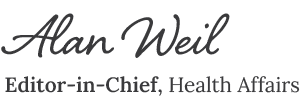More than 200,000 nursing home residents and staff died during the COVID-19 pandemic.
Tamara Konetzka and coauthors describe lessons learned from how the pandemic affected nursing homes.
They summarize policy responses that worked, the roles of community prevalence and planning, the structural characteristics of facilities, and shorter-term solutions to improve nursing home outcomes in the future.
Melissa Barber and coauthors analyze how COVID-19 affected exports of active pharmaceutical ingredients (APIs) from India.
Overall, volume dropped dramatically with small changes in prices, with the exception of “sharp price increases for APIs for some repurposed medicines, particularly those with significant social media attention (hydroxychloroquine and ivermectin).”
Peter Smulowitz and coauthors explore the extent and causes of emergency department (ED) and hospital overcrowding during the pandemic.
Analyzing Medicare data, they find widespread reductions in overall ED visits between 2019 and 2022, suggesting that overcrowding was primarily due to constraints in hospital capacity, likely as a result of staffing shortages and the limited ability to discharge patients.
Yuping Tsai and coauthors examine data on a Health Resources and Services Administration program that reimbursed providers for COVID-19 vaccines administered to uninsured adults.
They find that it accounted for nearly thirty-nine million doses, or 5.7 percent of all doses administered to US adults.
Ravi Parikh and coauthors examine commercial claims data and find that “the COVID-19 pandemic was associated with a substantial decline in physician gross revenue in 2020 compared with 2018–19, ranging from −1.8 percent to −18.2 percent across specialties.”
Revenue began to return to baseline for some, but not all, specialties in 2021.





.png?width=1196&upscale=true&name=health-affairs-event-lunch-learn-generic-insider-2023_eNewsletter%20(1).png)

